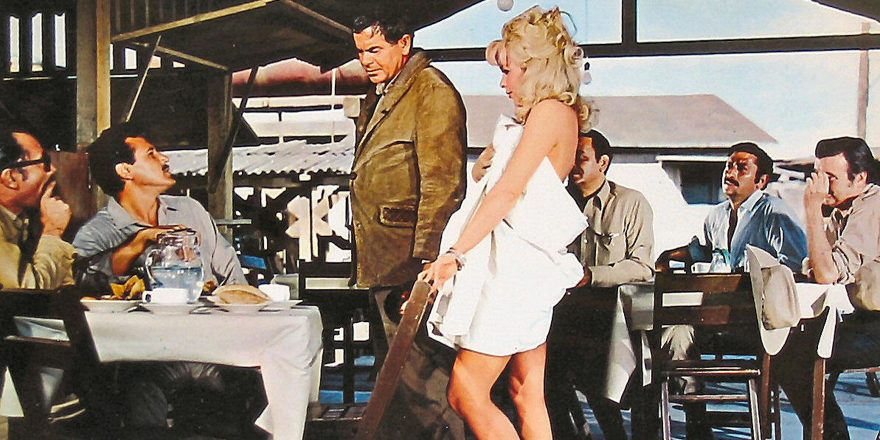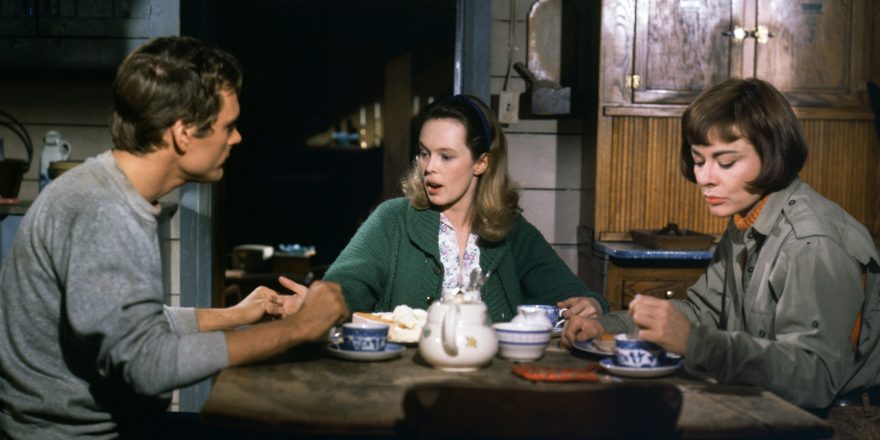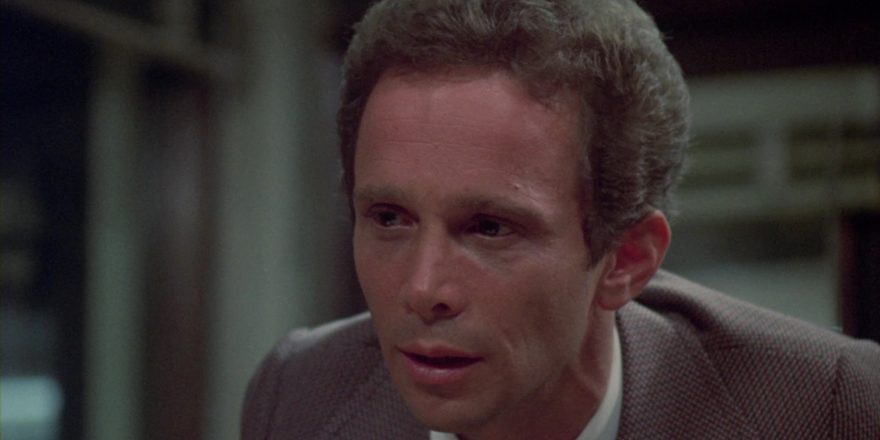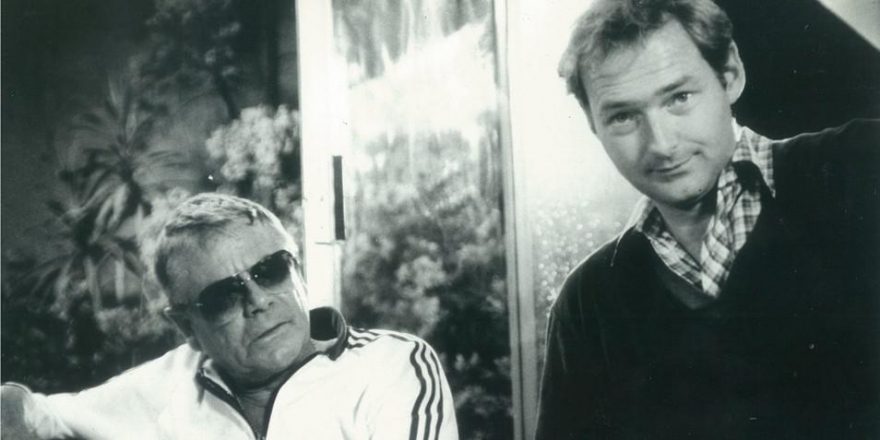Exploitation films are not what they used to be. Digital effects, which, let’s face it, aren’t very much fun at all, have largely rendered obsolete the hands-on goo and gore of good old-fashioned, in-front-of-the-camera, messy and scatological analogue effects found in B-movies of the sixties and seventies. The lazy, complacent short cuts of CGI no longer rely on the old FX low-budget credo of necessity being the mother of invention, the art of transforming found or available flotsam and jetsam into convincing props or sets. Overpaid actors are not forced to earn their keep by being subjected to a gauntlet of torments in front of the camera, ensconced as they now are in arid studios playing to lifeless green screens. Even the arduous but exciting task of finding unique and spectacular locations to increase the value of your film has been compromised by the temptation to just whip something up digitally in post. Add to these misfortunes the sad fact that the exploitation film has been completely co-opted by mainstream, corporate Hollywood, making gore, splatter and extreme violence, once the provenance of crazy outsider auteurs, as benign and commonplace as toilet paper commercials, and you definitely have a recipe for insensate boredom. Instead of having to furtively and trepidatiously seek out word-of-mouth, taboo, underground exploitation films in grungy fleapit and grindhouse cinemas, now you merely have to turn on basic cable to witness evisceration, rape, cannibalism or torture, rendered in the most graphic yet inert, slick yet unsordid corporate style. Exploitation is the new Wonder Bread.
Rage, a 1966 Mexican film directed by Gilberto Gazcón, is one of my favorite exploitation films of the sixties, a cheap, down-and-dirty confection that relies on inventive camera style, spectacular locations and tortured endurance acting to provide us with our thrills. Veteran Hollywood warhorses Glenn Ford and Stella Stevens, who may seem to be slumming in a south-of-the-border quickie production to pay down the mortgage, nonetheless give their all, turning in credible and compelling performances under the most challenging of circumstances. Although at times roughly shot and badly dubbed, Rage – about an alcoholic doctor who contracts rabies and has 48 hours to get to the nearest town that has the anti-rabies vaccine – is Tarantino’s wet dream, an exploitation film that wrings every conceivable emotional and psychological angle out of its sordid premise. Shot in the scenic Sierra de Órganos National Park, the film exploits its location to maximum effect, lending it the aspect of an abject, degenerate David Lean epic.
Glenn Ford was one of the greatest journeymen stars of classical Hollywood, turning in solid performance after performance in more than 50 years in the business. His acting in Rage is remarkable for its intensity and utter commitment in a production for which a lesser star might have been tempted to just phone it in. But it’s the underappreciated Stella Stevens, one of the many blond bombshells enlisted by studios to fill the void left by the demise of Marilyn Monroe, who really gives the film its oomph. Born in Yazoo City, Mississippi, Stevens got her first break in Hollywood starring as Appassionata Von Climax in Li’l Abner in 1959, which she boldly topped off with an appearance as Playboy’s Playmate of the Month in January 1960, following in Marilyn’s … er, footprints. A year later, she co-starred with Bobby Darin in Cassavetes’ studio picture Too Late Blues before finally breaking out in her role opposite Elvis himself in Girls! Girls! Girls! in 1962. She went on to star in a number of memorable auteur studio films, including Vincente Minnelli’s The Courtship of Eddie’s Father and Jerry Lewis’ The Nutty Professor (both 1963), Sam Peckinpah’s The Battle of Cable Hogue (1970), and Peter Bogdanovich’s Nickelodeon (1976). Along with being a Matt Helm girl opposite Dean Martin in The Silencers (1966), perhaps her most famous role, as Ernest Borgnine’s reformed whore wife, Linda Rogo, in the great disaster potboiler The Poseidon Adventure (1973), demonstrated that she, along with Hollywood stalwarts Borgnine, Gene Hackman and Shelley Winters, knew how to elevate hokey material to unexpected heights by not condescending to their hackneyed roles, but rather sincerely imbuing them with the essence of their own screen personae. Often typecast as the ditzy blond or hooker with a heart of gold, Stevens always infused her performances with enough pluck and moxie to make even the most demeaning role a proto-feminist statement.
Like most “classic” cinema, Rage is chock full of #MeToo moments. The sexploitation angle starts right off the bat during the credits when a dump truck full of dancing girls covered by a tarp barreling down the road hits a rock and the girls are forced to get out and push. When one of the girl-transporters slaps Perla (Stevens) on her ass, which is packed into a tight pink dress, and tells her it will make her back strong, she yells back, “That’s not my back, stupid!” and throws a rock at him. Cut to an explosion on the side of the mountain, as if to reinforce her righteous indignation, and to establish the prime location of the film: a construction company building a tunnel through a mountain, stationed near a small, dusty mining camp. It’s a scenario perhaps borrowed from Clouzot’s 1953 The Wages of Fear (and reiterated in Friedkin’s 1977 Sorcerer), of which Rage is a cheap but satisfying variation.
The economy with which the narrative is set up is remarkable, a trademark of any exploitation film worth its salt. Fortunato, the soon-to-be-ironically-named driver of a construction vehicle, who is introduced holding his pregnant black cat, has a conversation with a fellow worker who is looking through a telescope at the drunken Dr. Reuben (Ford) passing by on a horse; cut to the doctor entering town greeted by his snarly German Shepherd, and addressing Maria, a pregnant woman, as he enters his office. In short order, the cat, which has rabies, will bite the dog, which will bite the doctor, who will have to perform a C-section on the pregnant woman, only one of the many roadblocks he will be forced to surmount on his trek to the nearest city to find the anti-rabies serum. When a friend tells the doctor he shouldn’t drink liquor on an empty stomach, he replies, “My insides are already rotten,” setting up a whole overdetermined field of symbolism based on pathology and infection.
Meanwhile, Perla refuses to get out of the truck as it precariously crosses a rickety wooden bridge poised over a deep canyon (a very Wages of Fear moment); instead, the camera tracks into her as she lounges glamorously smoking a cigarette in the back, oblivious to the extent of the danger she’s in. Stevens, with her trademark platinum hair, heavy base makeup and matte white lipstick, her legs splayed wide, plays the tough, wise-cracking broad almost in quotations, or as if she’s in a comic book, much like her Li’l Abner character. Even when the truck arrives in town and the girls are unceremoniously dumped out like so much trash, she maintains her dignity and heads for the only private shower in the camp, which happens to be at Dr. Reuben’s place. After the girls meet him and head for the shower, the doctor’s dog bites his arm, and the plot is set in motion.
The women partake in a night of debauchery with the local gentry before they’re loaded up and hauled off to the next town, except for Perla, who, symbolically, has passed out on the doc’s examining table, her black bra draped over a nearby skull. (Her inner rot, as a wanton stripper, is consistently paralleled with the doctor’s gut, rotted by liquor and guilt.) Meanwhile, the doc has spent a feverish night experiencing the first symptoms of infection. In a niftily expressionistic scene, the camera tracks up to a dizzying height to look down on him tossing and turning in bed, intercut with a montage of photos of his wife on the wall, accompanied by auditory hallucinations of her voice. (We gather they were in a car crash together and she died after he was forced to abandon her to fetch help.) The symbolic and narrative build-up of the rabies theme culminates in a scene that exploits the disease to its maximum potential: the rabid Fortunato, now a monster bound by ropes, foams at the mouth as he is led into the middle of town by four men, who tether him to a post. As Perla, bedecked in a poncho and high heels, looks on, the doc administers three tests to confirm Fortunato has the symptoms of the disease: acute sensitivity to light, an aversion to loud noises, and – like an inversion of Frankenstein’s monster’s fear of fire – a morbid hydrophobia, proved when he recoils at the sight of the water the doctor pours in front of him. These three themes will be joyously exploited throughout the rest of the film, along with one other convenient exploitation-friendly symptom: the fact that, at least in movie fantasy terms, the disease apparently turns one into a sex maniac. The scene wraps up neatly as the camera cranes up to reveal the rabid cat dead on a rooftop, ending the first act.
Eight days later, Perla, sporting a crème de menthe micro-mini dress (actually the doc’s medical shirt) takes her leave from the good-hearted but alcoholic doctor, who is still in love with his ex-wife, and whose death he blames on himself. Hopping into his yellow Jeep to pay a house call to the pregnant Maria, he encounters her husband, Pancho, on the way being attacked by his now-rabid dog, which he is forced to shoot. He realizes that he has been infected, and that he can’t operate on Maria because he only has 48 hours to get the vaccine. He zooms off, leaving Pancho in the dust, but he is forced to return by the haunting voice of his beloved wife, whom he was forced to leave on her own when she was dying. He can’t allow another woman that he has abandoned to meet the same fate.
The central set piece of the film that follows, his C-section performed on Maria, visually exploits the pregnancy theme of the movie to its fullest potential, a scene that mesmerized and terrified me when I saw the movie on TV as a child. As there is no electricity in Pancho’s modest house in the desert, the doctor pulls his Jeep up to the door and points the headlights at Maria, who is lying covered by a white sheet on the kitchen table, four candles on each of its corners, lending the proceedings an aspect of religious ritual, almost like an exorcism. (The entire sequence is covered by a series of consistently inventive camera angles, adding to the film’s dissolute epic quality.)
In fact, the doctor is on a quest not only to cure himself of rabies, but also to exorcise his own demons through a series of redemptive tasks. After the operation, Maria compels Pancho to go with the doctor to help him find the cure, and the two head off together, although the battery power they used up to illuminate the pregnancy will soon leave them stranded in the middle of nowhere.
Meanwhile, Perla is on a quest of her own – for female empowerment! As she sleeps, her driver literally attempts to lick her pussy, to which she responds by slapping him, by my count, 22 times (surely a cinematic record) while she yells at him that she’s “decent when I want to act decent. And I do what I want, when I want, with whom I want, whenever I want!” (She also pulls his hair and throws a bottle at him.) Only Theresa Russell in Bad Timing has made as strong a feminist declaration while embracing the power of her own sluthood.
When the doctor and Pancho stop for gas at the ranch house where Perla is staying, she insists on joining them on the quest for the vaccine, having long since fallen in love with the doctor. After running out of gas for a second time, the threesome heads for the nearest city on foot, across the desert and over a mountain, overcoming every imaginable obstacle along the way – from sandstorms to tumbleweeds to the merciless sun. A waterfall at an oasis tests how far the doctor’s disease has advanced, but his hydrophobia turns out to be only paranoia for now. As any great exploitation film would have it, the matter of the other major symptom – the rabies potentially turning him into a sex maniac – is treated with delicious ambiguity, leaving it open to interpretation whether or not his lust for Perla is a symptom of his infection, or something she just causes naturally wherever she goes. After the good doctor removes a thorn from her inner thigh with a hot needle, vacillating between Dr. Jekyll and Mr. Hyde in the process, he makes Pancho tie his hands together lest he be further tempted by lust or disease, or both.
As exploitation films are expected to raise the stakes to the ultimate degree, it’s not too surprising that toward the end of the film, the trio, while climbing over the mountain, encounters a school bus full of children. Pancho forces the driver at gunpoint to allow them on the bus, and the doctor and Perla, like all bad children, make their way to the very back. As the kids torment the doctor with magic store toys – vampire teeth, google-eye glasses – Stella finally articulates the nature of her disease that runs parallel to his: “For where I come from, for what I am, there is no cure.”
To save the children, the bus driver purposefully crashes the bus, busting its crankcase, making it necessary for them to evacuate, leaving Pancho, Perla and the doctor to attempt to push the heavy vehicle up the last few yards to the top of an incline leading down to the city (hopefully named Buena Vista). When the three of them can’t budge it, the children join in to help, and in the final scene the threesome coasts down the mountain toward civilization and the cure. They run down the final stretch together, ending with a close-up of the doctor, the disease of his soul already healed. The expression on Glenn Ford’s face, having survived not only a rabies infection, but also a low-budget, badly dubbed Mexican exploitation film, with his dignity completely in tact, is nothing short beatific.








